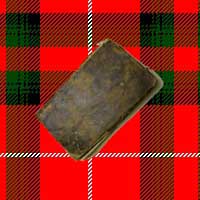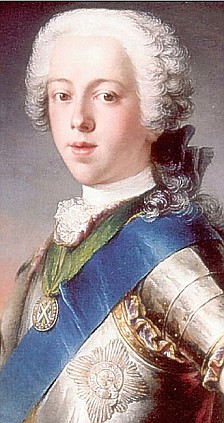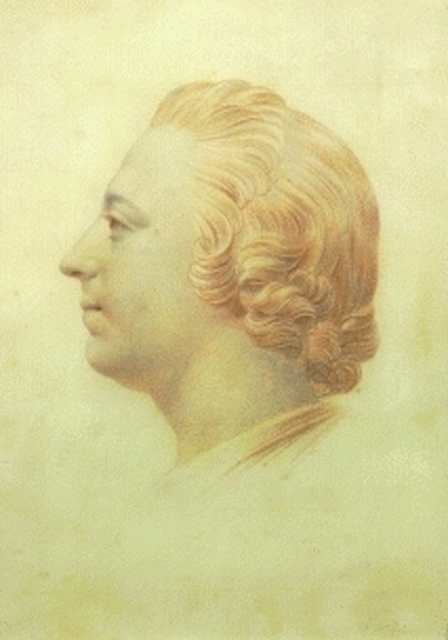
| Charles Edward Stuart (Bonnie Prince Charlie) |
"Ascanius; or, the Young Adventurer" describes in great details his cause took from his first arrival with seven companions on the little isle of Eriskay, between Barra and South Uist, on July 23, 1745 to his final escape to France from Loch nan Uamh on September 19th 1746 (O.S.) after being aided by Flora MacDonald who disguised him as Betty Burke (Bettie Burk - Robert Forbes, M.A. ), an Irish spinning maid so he could escape to the Isle of Skye.
In David, Lord Elcho's A Short Account of the Affairs of Scotland in the years 1744, 1745, and 1746 (with maps [larger download]) page 257. "When the Army Came near town it was mett by vast Multidudes of people, who by their repeated Shouts & huzzas express’d a great deal of joy to See the Prince. When they Came into the Suburbs the Croud was prodigious and all wishing the Prince prosperity; in Short, nobody doubted but that he would be joined by 10,000 men at Edinburgh if he Could Arm them. The Army took the road to Dediston, Lord Strathallan marching first at the head of the horse, The Prince next on horseback with the Duke of Perth on his right and Lord Elcho on his left, then Lord George Murray on foot at the head of the Colum of Infantry. From Dediston the Army enter’d the Kings park at a breach made in the wall. Lord George halted sometime in the Park, but afterwards march’d the foot to Dediston, and the Prince Continued on horseback always followed by the Croud, who were happy if they could touch his boots or his horse furniture. In the Steepest part of the park Going down to the Abey he was oblidged to Alight and walk, but the Mob out of Curiosity, and some out of fondness to touch him or kiss his hand, were like to throw him down, so, as soon as he was down the hill, he mounted his horse and road through St Anes yards into Holyroodhouse Amidst the Cries of 60000 people, who fill’d the Air with their Acclamations of joy. He dismounted in the inner court and went up Stairs into the Gallery, and from thence into the Duke of Hamiltons Apartment, which he Occupied all the time he was at Edinbourgh. The Croud Continued all that night in the outward Court of the Abbey and huzza’d Every time the Prince Appeared at the Window." There is an excellent animation on the BBC web site showing his travels here. You can also see the path on a Google map here. |

 Bonnie Prince Charlie
Bonnie Prince Charlie